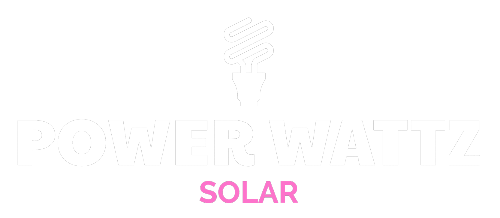
A solar feasibility study is a crucial first step in evaluating whether a solar energy project is viable from both a technical and financial standpoint. Whether you’re developing a rooftop system, a commercial array, or a utility-scale site, a comprehensive solar panel feasibility study or feasibility study for solar power plant helps determine if the project is worth pursuing. These reports identify potential roadblocks early in the planning process—saving time, money, and resources as the project advances.
Key elements analyzed in a solar feasibility report include the site’s solar potential, access to the electrical grid, available incentives, interconnection requirements, energy storage opportunities, and regulatory considerations. A well-executed solar farm feasibility study also evaluates environmental constraints, project financing options, land use issues, and long-term system performance.
GreenLancer provides fast solar permit plan sets and engineering services, helping to advance solar projects. Create a free account to begin shopping for solar design services.
What Is a Solar Feasibility Study?
A solar feasibility study or solar panel feasibility report evaluates whether a solar energy system is a practical and cost-effective solution for a particular site. It examines key technical and site-specific factors like solar irradiance, available roof or land area, shading, system orientation, energy consumption patterns, and local regulations. These details help determine if the system can be efficiently designed and interconnected.
The solar power plant feasibility study also includes a financial analysis—factoring in installation costs, incentives, projected energy savings, payback period, and return on investment. Whether for a building, business, or utility-scale application, a well-structured feasibility study for solar power plant projects provides clear insights into whether the system aligns with your goals. Ultimately, it helps determine the feasibility of solar energy deployment and whether to move forward with installation.
Why Are Solar Feasibility Studies Important?
Conducting a solar feasibility report early in the planning phase helps minimize risks by identifying challenges before they become costly delays. Issues like interconnection limitations, zoning restrictions, or space constraints can often be addressed through early planning and design modifications. Without a detailed solar panel feasibility study, solar projects face a higher risk of budget overruns, permitting delays, or technical setbacks—negatively impacting both developers and solar contractors.
On the flip side, a successful project backed by a solid solar farm feasibility study can enhance a contractor’s reputation, strengthen client trust, and generate positive reviews and referrals. Accurate feasibility reporting is an essential step toward delivering efficient, on-budget solar installations.
What Goes Into A Solar Feasibility Report?
A thorough solar feasibility study typically begins with a site assessment (when applicable), selection of preliminary system components, and energy production modeling. For a basic solar panel feasibility study on a residential rooftop, this process can be relatively straightforward. However, more complex installations—such as those involving large homes, commercial buildings, or solar farms—require deeper analysis to address site-specific constraints and financing strategies.
When planning a larger or utility-scale project, a solar power plant feasibility study is often more time-intensive and technical. These reports evaluate numerous aspects, including grid interconnection, zoning limitations, and design trade-offs. Below are the most common components included in a solar feasibility report.
Solar Energy Project Background
Understanding the project’s purpose and objectives is key. Whether the goal is energy savings, reducing carbon emissions, or earning income from energy production, this context shapes the solar feasibility analysis. For example, identifying whether battery storage is desired early in the process informs system design and equipment selection.
Solar Site Selection
Site selection is foundational to the feasibility of solar energy at a given location. Factors like solar access, shading, proximity to the utility grid, and land topography can significantly impact system performance and installation costs. A detailed solar farm feasibility study also considers whether the site requires land clearing, grading, or erosion control.
A solar feasibility report also assesses the need for land clearing, which can add costs and environmental impact. Additionally, the site selection process helps identify which regulations will influence permitting fees, building codes, and utility interconnection requirements. Utilizing drones for site assessment can further enhance the process by providing precise aerial imagery and topographical data, enabling more accurate evaluations of potential solar sites.
Recommended Solar Energy Equipment
A solar feasibility study includes preliminary recommendations for photovoltaic (PV) modules, inverters, racking systems, and energy storage. These recommendations are shaped by site-specific constraints such as roof load limits, structural integrity, and energy usage patterns.
For example, bifacial panels may be ideal for highly reflective surfaces, and ballasted racking systems might be suggested for flat rooftops with structural limitations. Inverter choices also vary depending on whether the project includes energy storage or requires smart inverter functionality.
Environmental And Regulatory Considerations
Solar regulations vary depending on building codes and the Authority Having Jurisdiction (AHJ). Solar farms must comply with federal and state environmental policies, such as the National Environmental Policy Act (NEPA), the Clean Water Act, and the Endangered Species Act.
A comprehensive solar feasibility study is essential to assess environmental factors and regulatory requirements before proceeding with a solar project. For projects on capped landfills, the Environmental Protection Agency (EPA) will need to be involved. For solar installations on historical buildings, additional restrictions may apply to preserve the property’s character, and the Landmarks Preservation Commission (LPC) may oversee compliance. In neighborhoods with a homeowners’ association (HOA), HOA approval may be required.
A solar feasibility report can help identify the environmental impact and suggest strategies to mitigate any potential issues, such as planting drought-tolerant wildflowers to reduce irrigation needs and provide pollinator habitats. Additionally, some solar developers are using sheep grazing instead of gas-powered mowers to cut down on carbon emissions and operational costs.
Economic Analysis of Solar Projects
A central part of any solar panel feasibility study is the financial assessment. This includes a detailed review of installation costs, long-term savings, and available incentives. A robust solar feasibility analysis will take into account the investment tax credit (ITC), bonus depreciation, MACRS, state-level rebates, and USDA REAP grants for eligible businesses and farms.
In commercial projects, the analysis may also explore time-of-use savings, demand charge reductions, and the terms of Power Purchase Agreements (PPAs) or third-party ownership models. This financial modeling helps stakeholders determine whether the project is a sound investment and estimate the payback period.
Community Impact of Solar Installations
A well-rounded solar feasibility study also considers the social and economic effects of the project. Solar farm feasibility studies often include analysis of tax benefits for local governments, lease revenue for landowners, and job creation potential. These installations can help communities meet clean energy goals and increase energy resilience.
Likewise, taking farmland out of production or destroying wildlife habitat may concern some communities. Some communities are also concerned about creating local jobs instead of bringing in out-of-state solar installers.
Land Suitability Evaluation in a Solar Farm Feasibility Study
In evaluating solar viability for a PV farm, a comprehensive analysis is conducted to assess topographical features, shading patterns, and soil conditions. The goal is to ensure that the chosen site offers optimal exposure to sunlight throughout the day, minimizing shading and maximizing energy production. Factors such as the slope of the land and its orientation are crucial considerations in determining the efficiency of solar panel installations, providing key insights into the overall feasibility of the solar farm project.
Conducting a solar farm feasibility study involves assessing various factors, including:
Land Suitability for Solar Farm:
-
Assess topography, soil conditions, and shading patterns to determine the feasibility of a solar panel installation.
Energy Consumption Patterns:
-
Consider upfront costs, potential revenue, and financial incentives to assess the project’s economic feasibility, which is often critical for obtaining project financing.
Infrastructure Accessibility:
-
Evaluate the proximity to existing grid connections, ensuring ease of integration with the power infrastructure. When grid integration is difficult, the project costs increase, decreasing solar farm feasibility.
Solar Technology Selection:
-
Solar feasibility studies commonly include selecting appropriate solar technologies, such as photovoltaic or concentrated solar power, based on site-specific conditions.
Community and Stakeholder Engagement:
-
Involve local communities and stakeholders to address concerns, garner support, and ensure positive social impact.
Grid Connection Capacity:
-
Building codes, electrical codes, and zoning obstacles can make it difficult to proceed with certain projects. The GreenLancer team is skilled at overcoming permitting and solar engineering challenges. Sign up for GreenLancer to begin shopping for solar permitting, engineering, and interconnection services.
When Are Solar Feasibility Studies Not Necessary?
Most installations benefit from a solar feasibility analysis to ensure that the proposed project realizes the desired goals. The depth of the study varies by the project size, potential issues, and stakeholder demands. Even for an off-grid solar project, it’s helpful to determine if the proposed clean energy system will meet the renewable energy needs of the occupants, even if not performing a full analysis.
Kickstart Your Next Project With a Solar Energy Feasibility Study
A thorough and accurate solar feasibility study lays the foundation for a successful PV project. They are an excellent way for reputable companies to differentiate themselves by ensuring that all key stakeholders are well-informed and that critical design constraints have been identified.
The GreenLancer marketplace connects you with a nationwide network of solar designers and licensed engineers. We provide fast, accurate permit-ready plan sets and engineering reviews to keep your solar projects moving forward. Complete the form below to get started.
Source link

